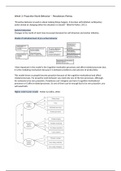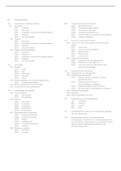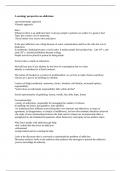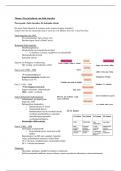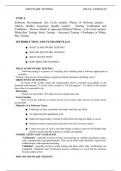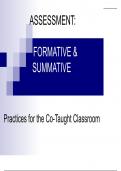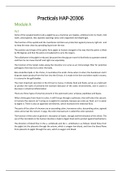Grade 12 IEB IT Notes
Normalisation:
Normalisation is a technique used for designing relational database tables to minimise duplications
and in so doing, safeguard the database against anomalies.
Attribute → field → column
Record → row
Atomic data:
This is data that is at the lowest form of detail and cannot be split further into subfields.
Derived data:
This data that is determined from one or more other fields.
Key:
A field or group of fields that are used to identify specific records.
Primary Key:
o This is a field that contains unique values to identify each record in a table
Composite Key:
o This is a key made up of more than one primary key that is used to identify records
in a table
Foreign Key:
o This is a field that is a primary key in one table but not in the other and serves as the
link between the tables.
Dependencies:
When a value in one field relates to or depends on a value in a different field.
Full dependency:
o There are non-key fields(attributes) that are fully functionally dependent on the
primary key.
Transitive dependency:
o This is when a field is dependent on another field which is not a primary key. It may
be a foreign key.
Partial Dependency:
o This is a field that is dependent on a part of a composite key (one of the primary
keys)
Referential Integrity:
This ensures that there is a link between tables so that data cannot be referred to if it doesn't exist.
i.e. a record cannot be deleted if it refers to another record in another table. Both records must be
deleted.
Repeating Groups:
A field contains multiple values or multiple fields have the same values and names. This is repeating
groups. Groups of data are repeated and so infringe on the primary key.
Redundancy:
Occurs due to repeating groups. Multiple fields have the same information.
Duplication:
When one record has the same information as another record. Not usually an issue.
1
Normalisation:
Normalisation is a technique used for designing relational database tables to minimise duplications
and in so doing, safeguard the database against anomalies.
Attribute → field → column
Record → row
Atomic data:
This is data that is at the lowest form of detail and cannot be split further into subfields.
Derived data:
This data that is determined from one or more other fields.
Key:
A field or group of fields that are used to identify specific records.
Primary Key:
o This is a field that contains unique values to identify each record in a table
Composite Key:
o This is a key made up of more than one primary key that is used to identify records
in a table
Foreign Key:
o This is a field that is a primary key in one table but not in the other and serves as the
link between the tables.
Dependencies:
When a value in one field relates to or depends on a value in a different field.
Full dependency:
o There are non-key fields(attributes) that are fully functionally dependent on the
primary key.
Transitive dependency:
o This is when a field is dependent on another field which is not a primary key. It may
be a foreign key.
Partial Dependency:
o This is a field that is dependent on a part of a composite key (one of the primary
keys)
Referential Integrity:
This ensures that there is a link between tables so that data cannot be referred to if it doesn't exist.
i.e. a record cannot be deleted if it refers to another record in another table. Both records must be
deleted.
Repeating Groups:
A field contains multiple values or multiple fields have the same values and names. This is repeating
groups. Groups of data are repeated and so infringe on the primary key.
Redundancy:
Occurs due to repeating groups. Multiple fields have the same information.
Duplication:
When one record has the same information as another record. Not usually an issue.
1

